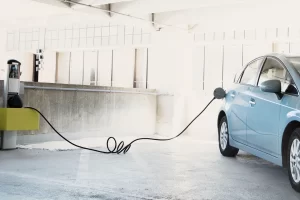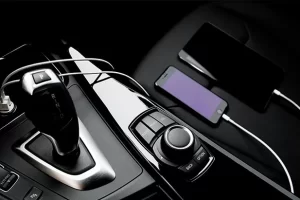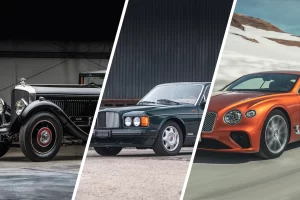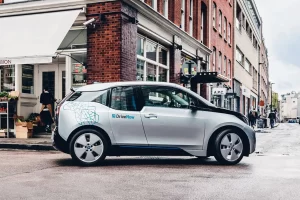
As the number of car deaths increases each year, automakers have been promising drivers that more advanced safety features are coming. These features, often known as advanced driver-assistance systems (ADAS), use sensors, radar and cameras to manage aspects of driving and intervene if the human driver makes a mistake.
These technologies can include automatic emergency braking, lane keep assist and adaptive cruise control. They can also help drivers avoid distractions and keep a safe distance from other vehicles.
Automatic Emergency Braking
Automatic Emergency Braking (AEB) is a safety feature that can help you avoid a crash by applying your brakes automatically when needed. These systems use a combination of sensors and cameras, and they are available on many new cars in both low-speed and high-speed versions.
Most vehicles with AEB come with a radar sensor positioned on the front grille, bumper or air vents, and cameras inside the windshield or behind the rearview mirror. They work with a system called Forward Collision Warning to detect potential collisions and trigger braking when necessary.
The warnings come in the form of a sound or a visual display on the dashboard. They are typically triggered before AEB kicks in, and they usually warn you that there is a possible crash in front of you.
AEB can also automatically activate when it determines that you are about to hit something behind you or a stationary object, such as a tree or wall. These are particularly useful when you’re backing out of a parking spot or driveway, and they can also prevent rear-end collisions with other vehicles.
However, this is a braking system that can be very powerful, and it may not always be the best way to react to a crash. Sometimes it can even cause you to hit the brakes unnecessarily.
While automakers have long touted this technology as a lifesaver, it has been criticized for its failure to detect moving vehicles in the front and rear of your car. AAA, for example, has urged automakers to improve their AEB systems’ ability to detect moving objects and reduce the likelihood of rear-end crashes.
The most advanced models, on the other hand, can sense stationary or moving pedestrians, cyclists, and other cars in their path and automatically apply the brakes to slow or stop them. They can also be used to prevent rear-end collisions and mitigate the severity of a crash.
Automatic Emergency Braking is a critical part of the growing number of safety features that are standard on most new vehicles. It has been shown to significantly reduce the risk of rear-end collisions, and it can save lives in those crashes by braking when it’s necessary. That’s why government safety agencies have made it mandatory in some countries, and most 2022 model year cars will be equipped with this tech thanks to a voluntary push from automakers.
Blind Spot Warning
Blind Spot Warning, or BSW, is one of the latest car safety features. It’s a great way to make sure that your car can see everything on the road ahead of you when you change lanes or make a turn.
This system uses radar sensors mounted on the left and right side of your rear bumper to detect traffic that is approaching your vehicle. Once the detection has been made, a visual or audible warning will appear in your side mirror or windshield frame.
More advanced versions of this system may also provide a sound warning if you use your turn signal and there is a vehicle in your blind spot, as well as a visual notification. This will alert you to the danger and allow you to stop before changing lanes or making a turn.
Besides preventing crashes, blind-spot monitoring systems have been shown to reduce lane change and merging accidents by 14%. That’s a big difference, and it’s good to know that there are options available for every driver on the road.
These systems are usually combined with a more active crash-assistance feature that helps the driver avoid a collision if they ignore the visual and/or audio warnings and try to make a lane change or merge without looking over their shoulder first. This active crash-assistance feature can either apply light braking pressure to help the driver stop in time or provide steering inputs to steer their vehicle into the proper lane, depending on the system’s settings.
Some vehicles are also equipped with a lane-centering feature that automatically applies the correct amount of steering inputs to keep your car centered in its lane. These systems are especially useful for merging into or reversing out of another lane when the road is narrow, such as at an intersection.
The cost of these systems has gone down over the years, so they are now available on many lower-priced vehicles, not just high-end ones. Some automakers have even included them as part of the standard equipment on their new models.
Lane Departure Warning
Lane departure warning systems are designed to help drivers stay on the road. They work by detecting the distance between the vehicle and lane markings on the highway, and then alerting you if your car begins to drift across them.
Some lane departure warning systems are only activated by your turn signals, while others can be switched on or off by pressing a button. Some systems even use a camera mounted near the rear view mirror to recognize the lane markers.
If your lane departure warning system doesn’t work properly, you could be headed for an accident. Make sure to check the system’s maximum speed limit and minimum driving speed before turning it on or using it, as this can affect how it operates.
When your lane departure warning system does work, you’ll receive a visual or audible warning that the lane line has been crossed. In some cases, it will also apply a small amount of torque on the steering wheel to help you regain control.
The lane-departure warning system in some vehicles is powered by a low-cost camera that watches lane markings to determine if your car has drifted across them. Some of these systems can even steer themselves away from the lane edge to prevent accidents.
Most lane departure warning systems work best on highways, but they may not be effective in construction zones or bad weather conditions. Regardless, they are an important safety feature that should not be taken for granted.
A lane-departure warning system may also be used in conjunction with another safety feature, such as adaptive cruise control or blind spot detection. When combined, they can protect you from high-speed collisions and run-off-road accidents.
Lane departure warning systems are relatively easy to install and are available in most new cars. They can be controlled with a button, or by the driver’s dashboard display.
Some lane-departure warning systems will beep when your car gets too close to the lane lines, and then silence when it’s out of range. Other systems may vibrate the steering wheel and give you a haptic warning.
Pedestrian Detection
Pedestrian detection is one of the latest car safety features available on a growing number of vehicles. It uses cameras and other sensors to detect people walking or running in front of your car, alerting you with a warning. Some systems also automatically apply the brakes if a pedestrian is detected and you fail to react quickly enough to slow down.
While these systems could help prevent crashes, they should never replace driver awareness. Drivers must pay attention to their surroundings at all times and avoid sudden acceleration, changes in speed, or unexpected road conditions.
According to data compiled by Consumer Reports, pedestrian-detection systems are now available on 38 percent of models sold in the United States. And more than half of them come standard on new cars.
A vehicle’s PD system typically warns you of a potential collision with a pedestrian using visual, audible or tactile warnings. It may also trigger an automatic emergency braking feature that applies the brakes when you don’t brake quickly enough.
Some models add additional features like automatic headlamps or lane departure warnings that may be activated by the pedestrian-detection system as well. Some also use a thermal imaging camera to improve performance in the dark and under low-light conditions.
The IIHS has updated its test to evaluate a vehicle’s pedestrian-detection capabilities at night. The test simulates three different pedestrian scenarios: an adult crossing the road, a child darting between parked cars, and an adult walking on the shoulder of the road.
In each scenario, a vehicle is evaluated at speeds of 12 and 25 mph with the headlights on high or low beam settings. The test measures how fast each vehicle’s PD system can reduce the speed of the car before it hits a pedestrian dummy.
The IIHS ratings are based on an average speed reduction in five test runs on dry pavement, with the headlights on high- and low-beam settings. Vehicles with a camera-based pedestrian-detection system receive the IIHS superior rating and those with a radar-based PD system receive an advanced or better rating.










